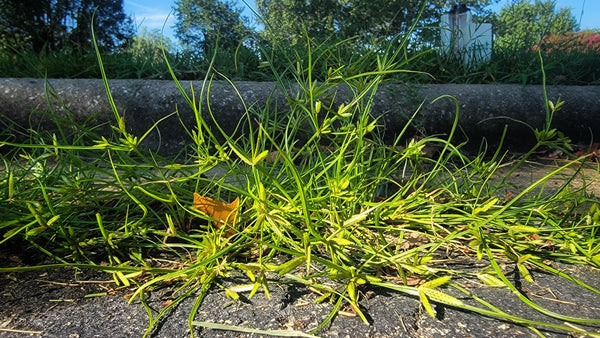Have you ever seen your lawn go from being beautiful and lush to completely dead in spots? While there could be a variety of problems like insect damage, animal damage, or poor nutrition it is common for it to be disease related. Diseases attack plant’s health throughout the season but are commonly seen during the summer months in lawns.
Like lawns, landscape plants can have diseases that negatively affect the plant, and some can cause death. This is where a fungicide comes in. A fungicide is a chemical that kills or reduces the effect of a fungus on a plant.
Cleary’s 3336 F is a fungicide that is effective on ornamental plants and turfgrass and delivers great results on certain diseases.
Active Ingredient
Cleary’s 3336F active ingredient is 41.25% thiophanate-methyl which has preventative and curative actions by systemically flowing through the plant. It can be applied by itself or in combination with other active ingredients. Make sure to jar test for compatibility before tank mixing.

Where Can It Be Applied?
Cleary’s 3336F is safe to apply on home lawns, commercial turf, and golf courses and in annual, perennial, deciduous, and evergreen plants. It is safe on cool- and warm-season grasses making it one of the most versatile fungicide options.
Application Rates
Cleary’s rates change depending on what you are spraying on and where you are spraying it. The biggest thing to watch out for is the maximum rates per year. These are to reduce the chance of fungicide resistance that a disease can develop.
Turf:


Landscape Ornamental Foliar Spray


Lawn: Preventing and Curing Fungus
With any fungicide, applying with plenty of water is the key for a successful application. Make sure to use 2-4 gallons of water per 1,000 sq ft when applying Cleary’s 3336F.
You can apply Cleary’s 3336F as a preventive or curative fungicide. Watch for conditions that promote disease like 70 degree nights with moist for brown patch. If you are trying to use as a preventive apply right before these conditions.
Cleary’s 3336F works really well on Gray Leaf Spot which has become an increasing problem in Turf-Type Tall Fescue. Gray Leaf Spot is commonly seen with continuous moisture on leaf tissue for 14 hours and higher daytime temperatures (70-95°F).
It is important to rotate fungicides with Cleary’s 3336F to prevent fungicide resistance from building up. An example of this would be using a preventative schedule like this:
|
May |
Cleary’s 3336F |
|
June |
Headway |
|
July |
Cleary’s 333F or different group |
|
August |
Headway or different group |

Landscape Ornamentals: Preventing and Curing Fungus
In landscape ornamentals, soil drenches provide the best preventative results will maintain with Cleary’s 3336F or rotating another fungicide every 21-28 days.
Cleary’s 3336F can be applied as a foliar spray when disease first appears or when conditions promote fungus activity. Reapply every 14 days as needed for best control.
Apply till mixture is dripping off leaves for adequate coverage. If rainfall pressure is high, using a spreader sticker or a fungicide activator may be needed for proper absorption of product.
It is smart to combine Cleary’s 3336F with other products for longer lasting results and better control of certain diseases.
Label:
https://www.cdms.net/ldat/ld3N2001.pdf




